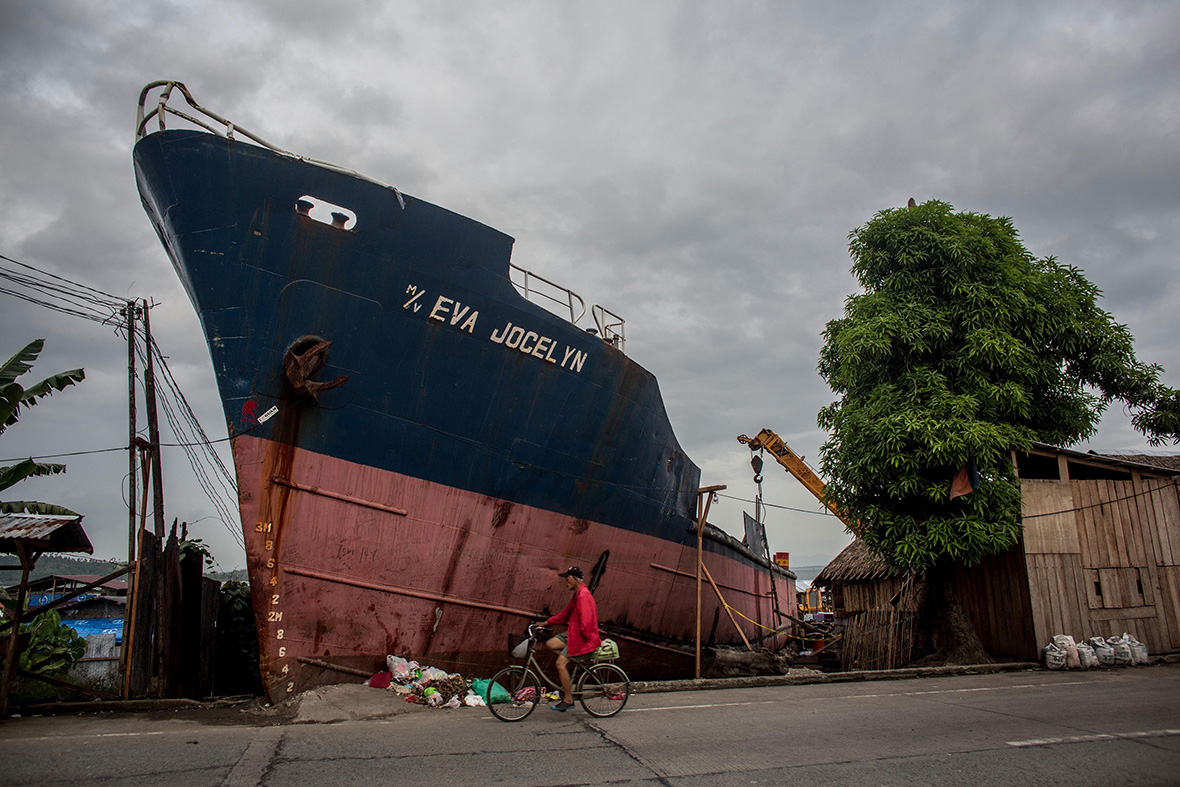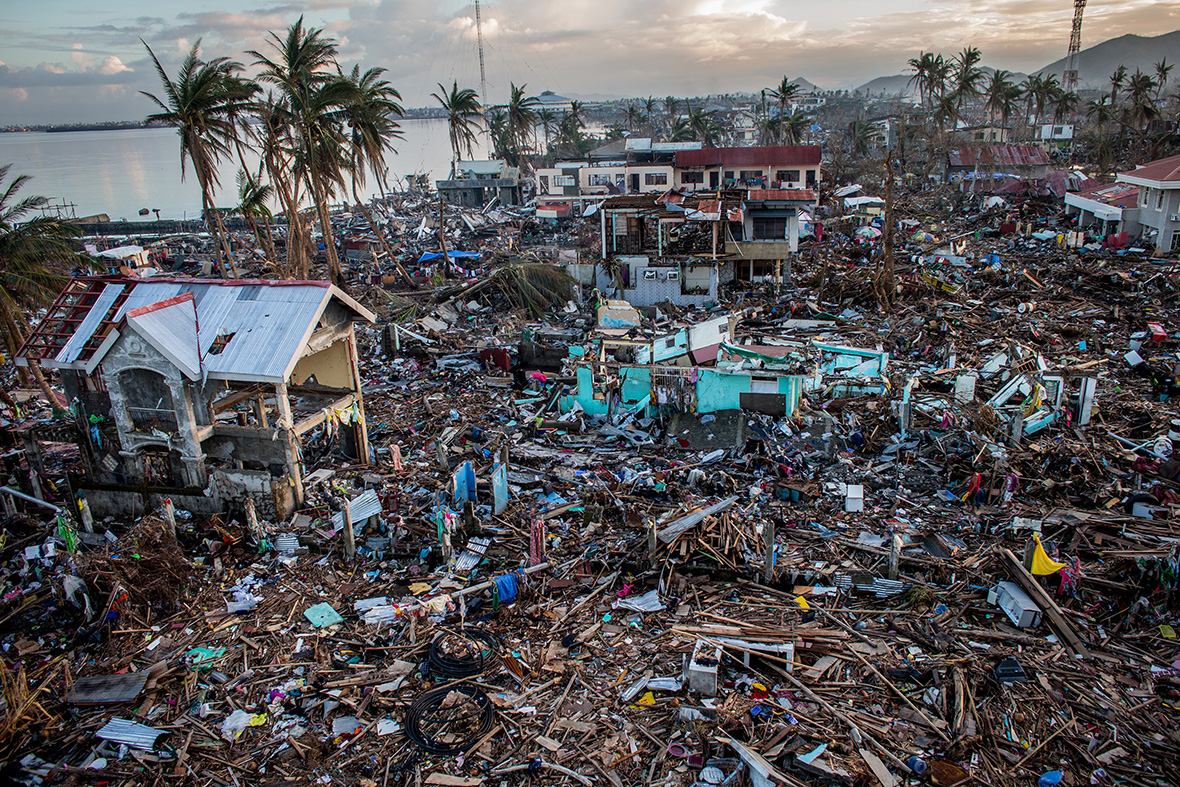- By David Sim
 November 6, 2014 16:00 BST
November 6, 2014 16:00 BST
A year after Typhoon Haiyan devastated huge swathes of the Philippines, close to 25,000 people are still living in tents and temporary shelters.
The category five typhoon wiped out or damaged practically everything in its path as it swept ashore on 8 November, 2013, with seven-metre storm surges destroying around 90% of the city of Tacloban in Leyte province.
Haiyan killed or left missing close to 8,000 people and displaced as many as four million.
Chris McGrath photographed the devastation in the days after the typhoon hit, and has returned to Tacloban one year later.
Magallanes district in Tacloban City on November 17, 2013 and on November 4, 2014
Critics have slammed the government for its slow rehabilitation efforts despite enormous resources made available by foreign governments and aid agencies.
Philippine President Benigno Aquino only approved a £2.35bn six-year rebuilding masterplan a few weeks before the anniversary.
The main road in Anibong district, Tacloban City on 17 November, 2013 and 3 November, 2014
Typhoon Haiyan is one of the strongest typhoons ever to hit land. It caused destruction on an enormous scale, tearing down buildings, piling up cars and completely washing away some areas of cities.
The national disaster agency reported more than 6,300 people dead. A year later, more than 1,000 are still unaccounted for.

Bodies are seen in a mass grave on the outskirts of Tacloban City on 20 November, 2013(Chris McGrath/Getty Images)

A year later, on 3 November, 2014, grass has grown over the mass grave site at Basper Cemetery(Chris McGrath/Getty Images)
An estimated one million families (approximately four million people) were driven from their homes.
Tacloban City, the main city on the Philippines' central island of Leyte, bore the brunt of the damage.

Residents clear debris away on 17 November, 2013 near a ship that washed ashore by Typhoon Haiyan(Chris McGrath/Getty Images)

A year later, the debris has gone, but the ship is still there on the main road in Anibong district(Chris McGrath/Getty Images)
The Philippines, which sees an average of 20 typhoons a year, is planning to build typhoon-resilient structures and relocate residents living in danger zones to areas which it considers safer based on studies by local and international organisations.

A single tree is seen standing amid the rubble in Magallanes district in Tacloban City on 18 November, 2013(Chris McGrath/Getty Images)

A year later the tree is in leaf and residents have rebuilt their homes(Chris McGrath/Getty Images)

A homemade coffin is seen on the side of the road as curfew approaches on November 14, 2013(Chris McGrath/Getty Images)

Traffic flows along the road from the airport a year after Typhoon Haiyan on November 3, 2014(Chris McGrath/Getty Images)






No comments:
Post a Comment